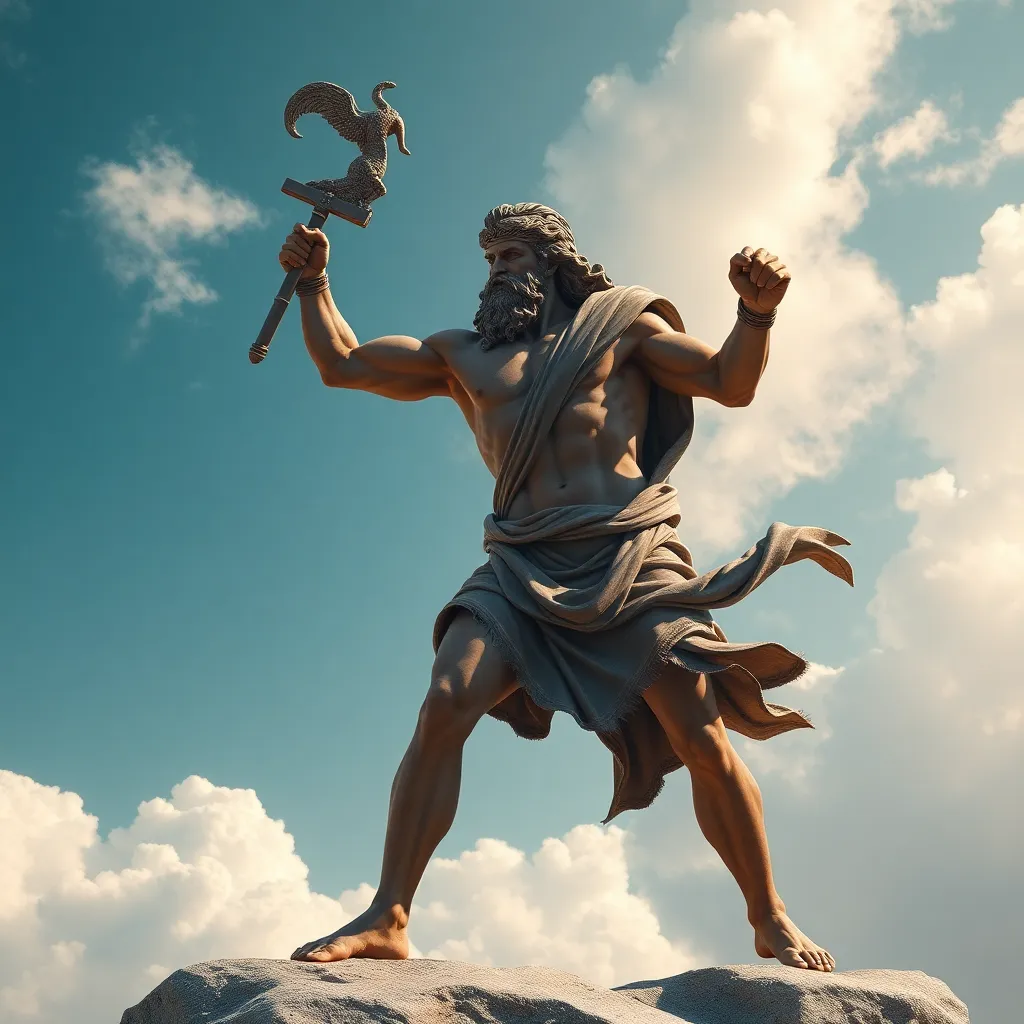Heracles and the Power of Myth: Lessons for Modern Society
I. Introduction
Heracles, known for his immense strength and heroic deeds, is one of the most celebrated figures in Greek mythology. His stories resonate through the ages, embodying themes of perseverance, redemption, and the human spirit’s resilience. Myths like those of Heracles are crucial in shaping cultural narratives, offering insights into human nature and societal values.
This article aims to explore the lessons of Heracles for contemporary society, examining how his trials and triumphs provide guidance for personal growth and understanding in our modern context.
II. The Mythological Hero: Defining Heracles
Heracles, also known by his Roman name Hercules, was the son of Zeus and Alcmene. From birth, he faced adversity, including Hera’s jealousy, which led to many trials throughout his life. Key stories include:
- The slaying of the Nemean Lion
- The capture of the Golden Hind of Artemis
- The cleaning of the Augean Stables
- The descent into the Underworld to retrieve Cerberus
These tales underline his characteristics as a hero: extraordinary strength, courage, and an unwavering will to confront challenges. Heracles symbolizes not just physical might but also the perseverance required to face life’s trials.
III. Challenges and Trials: The Twelve Labors of Heracles
The Twelve Labors of Heracles are perhaps the most famous aspect of his myth. These labors were a series of tasks imposed on him as penance, each representing a unique challenge:
- Nemean Lion
- Hydra of Lerna
- Ceryneian Hind
- Erymanthian Boar
- Augean Stables
- Stymphalian Birds
- Cretan Bull
- Mares of Diomedes
- Belt of Hippolyta
- Cattle of Geryon
- Apples of the Hesperides
- Capture of Cerberus
These trials serve as powerful metaphors for personal growth, illustrating that the path to self-discovery often involves facing and overcoming significant obstacles. Heracles’ resilience teaches us that perseverance in the face of adversity is essential for personal development.
IV. The Role of Myth in Understanding Human Nature
Myths are reflections of societal values and human emotions, allowing us to explore complex psychological landscapes. Heracles’ journey can be interpreted through various lenses:
- The Hero’s Journey: A classic narrative structure that reflects personal transformation.
- Struggle with Identity: Heracles grapples with the duality of his divine heritage and human limitations.
- Understanding Guilt: His actions often lead to guilt, representing the human experience of remorse and the quest for redemption.
By studying Heracles’ trials, we gain insights into our struggles, helping us cope with modern issues such as mental health, identity crises, and societal pressures.
V. Heracles and the Concept of Redemption
Heracles is a figure marked by struggle and redemption. After committing acts of violence under the influence of madness sent by Hera, he embarks on a path of atonement through the Twelve Labors. This journey highlights key themes:
- Confronting one’s past mistakes
- The importance of seeking forgiveness
- The possibility of personal growth following regret
Heracles illustrates that redemption is achievable and that acknowledging one’s flaws is the first step toward healing. In contemporary life, this message resonates deeply, encouraging individuals to embrace their past and strive for improvement.
VI. The Power of Strength and Vulnerability
The story of Heracles also emphasizes the duality of strength and vulnerability. While he is known for his physical prowess, he also experiences profound emotional struggles. This duality provides important lessons for modern masculinity:
- Emotional Expression: Heracles’ journey reflects the need for men to express vulnerability without losing their sense of strength.
- Recognizing Limits: Understanding that even the strongest among us have limitations is crucial.
- Seeking Help: Heracles’ reliance on allies at times illustrates the importance of community and support.
These lessons encourage a broader understanding of masculinity, promoting emotional awareness and the importance of support systems.
VII. The Legacy of Heracles in Popular Culture
Heracles has left an indelible mark on literature, film, and art. His legacy is evident in various forms of modern storytelling:
- Literature: From ancient texts to contemporary novels that reimagine his story.
- Film: Movies like Disney’s “Hercules” offer a family-friendly interpretation of his adventures.
- Art: Numerous artworks depict Heracles’ feats, symbolizing strength and heroism.
These adaptations influence societal perceptions of heroism, often emphasizing traits like bravery, sacrifice, and the quest for identity, which resonate with audiences today.
VIII. Conclusion
The lessons learned from Heracles are timeless and relevant, offering insights into resilience, redemption, and the complexities of human nature. Myths like those of Heracles continue to provide wisdom that can guide us in addressing modern challenges.
As we navigate our own trials, let us embrace the teachings of Heracles, recognizing that strength lies not only in physical might but also in emotional openness, community, and the courage to seek redemption.
In conclusion, the power of myths can inspire personal and societal growth, encouraging us to reflect on our journeys and the virtues we wish to embody.




